Collaborate Anywhere: Toolkit for Remote Team Success
Plunge into the exhilarating empire of remote work, where the blend of professional aims and independence creates a vibrant experience! Unlock the ability to seamlessly work from any corner of the globe by controlling the power of authentic collaboration tools with your team.
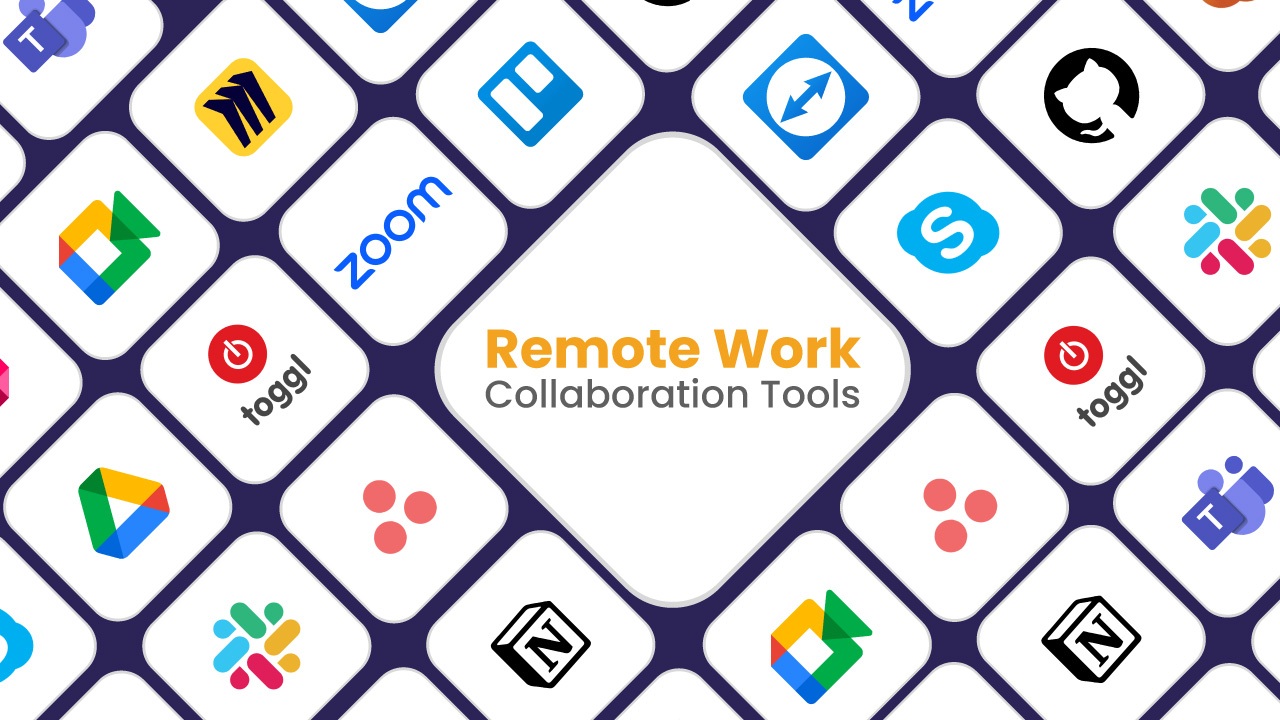
Currently, 12.7% of full-time employees work from home, illustrating the rapid normalization of remote work environments. Simultaneously, a significant 28.2% of employees have adapted to a hybrid work model.
According to Upwork, by 2025, an estimated 32.6 million Americans will be working remotely, which equates to about 22% of the workforce.
However, remote work comes with new challenges, specifically in a team, and requires an authentic set of tools. Thankfully, there are several digital tools to increase productivity, track records, organization, and time management, all while collaborating online.
Table of Contents
So, what’s in the remote team’s toolkit? Let’s dive into the essentials that’ll make your collaboration work journey a breeze:
Types of Digital Working Tools
With an increased demand for working from home or anywhere in the world, while collaborating with the team, an increment in digital tools is obvious. Several tools are used for collaboration, working remotely on subjective levels, and for digital nomads.
These are globally used tools that come with rapid updates according to the increased demands of the new-age digital use for several crucial opportunities while traveling or remote workers.
Digital tools for collaboration teams, online workers, and digital nomads are alike with very few differences while having the same types, such as:
- Communication Tools
- Collaboration Tools
- Project Management Tools
- Storage & Organization Tools
- Security % Desktop Access Tools
- Time & Task Tracking Tools
Statistical Analysis
According to Statista, more than 36 % of employees in the United States use Zoom when working remotely. These stats are followed by Microsoft Teams with 19 percent. Online collaboration tools include applications such as Zoom, Microsoft Teams, or Slack.
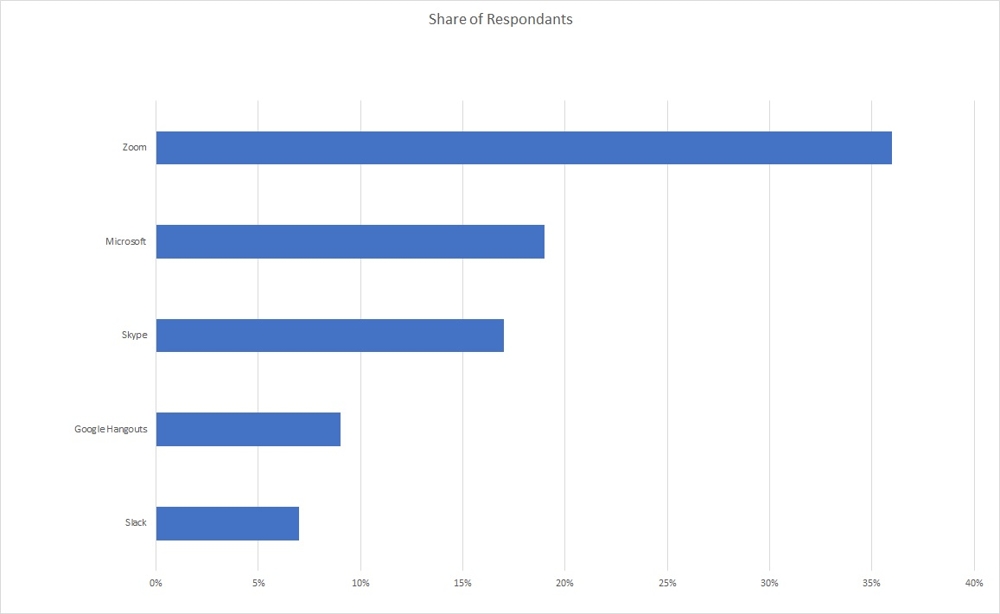
Benefits of Using Remote Work Tools
The workload for remote workers is as same as office workers, it requires to manage the work while sitting away. During COVID-19, when work majorly shifted to online platforms, substantial collaboration tools with up-to-date features were demanded to bear the workload.
The generated tools benefited the needs of remote work in so many ways that it is now the most wanted working type. Working while traveling across the globe is the most demanding working model, especially in the US. It’s a convenient mode to make money while voyaging specifically if you are a part of educational travel journey.
Some of the major benefits of using digital tools are:
- Increased Flexibility. Enables employees to work from anywhere, fostering a more flexible experience.
- Improved Collaboration. Eases seamless communication and collaboration among remote teams.
- Enhanced Productivity. Provides tools for efficient task management, time tracking, and project organization, boosting overall productivity.
- Cost Savings. Reduces the need for physical office space, commuting costs, and associated expenses.
- Access to Talent Worldwide. Allows companies to hire and collaborate with talent globally, expanding the pool of potential employees.
- Work-Life Balance. Supports a better work-life balance by allowing employees to create a personalized and comfortable work environment.
- Business Continuity. Ensures operations can continue seamlessly during unexpected events or disruptions to physical workplaces.
- Environmental Impact. Reduces the environmental footprint by minimizing commuting-related carbon emissions.
- Adaptability. Enhances the adaptability of remote workers by working in different environments.
Remote Work Collaboration Tools
Remote working tools cover a broad spectrum of features and services designed to facilitate remote workers such as digital nomads and remote team collaboration.
These tools enhance communication, collaboration, and productivity for individuals and teams working remotely.
These tools are categorized into various types based on their functions and features. Some functions of these tools are interlinked, whereas these are devised on the basis of prominent features. Here are some common types of remote work collaboration tools:
| Functions | Sub-Functions | Tools | Ratings (Trustpilot, g2) |
| Communication | Video Conferencing | Zoom | 1.7 |
| Microsoft Teams | 1.6 | ||
| Google Meet | 4.6 | ||
| Skype | 1.6 | ||
| GoToMeeting | 1.7 | ||
| Instant Messaging | Slack | 2.7 | |
| Telegram | 2.1 | ||
| Collaboration & Project Management | Project Management | Trello | 3.7 |
| Asana | 2.6 | ||
| Jira | 4.3 | ||
| ClickUp | 3.3 | ||
| Basecamp | 4.0 | ||
| Collaboration | Google Workspace | 4.6 | |
| Airtable | 2.2 | ||
| ProofHub | 4.1 | ||
| Notion | 3.1 | ||
| Github | 3.3 | ||
| File Sharing and Storage | Cloud Storage | Google Drive | – |
| Dropbox | 1.4 | ||
| Remote Desktop Access | Remote Desktop Software | TeamViewer | 4.7 |
| AnyDesk | 3.1 | ||
| Time Tracking and Productivity | Time Tracking | Toggl | 3.6 |
| Evernote | 1.7 | ||
| Todoist | 3.4 | ||
| Time Doctor | 1.8 | ||
| Design and Visual Collaboration | Online Whiteboards | Miro | 2.6 |
| Google Jamboard | – | ||
| Canva | 2.6 | ||
| MURAL | 3.0 | ||
| Security Tools | Virtual Private Networks | ExpressVPN | 4.6 |
| NordVPN | 4.2 |
1. Zoom
Video Conferencing and Virtual Meetings

Zoom has become synonymous with virtual meetings and video conferencing fostering productive collaboration.
Its high-quality video and audio, along with features like screen sharing and chat, make it an essential tool for remote collaboration.
Zoom fosters a sense of connection, enabling teams to meet “face-to-face” regardless of physical location.
Key Features
- High-quality video and audio for virtual meetings.
- Screen sharing for effective presentations.
- Chat functionality for real-time communication.
- Breakout rooms for smaller group discussions.
How does Zoom help? Zoom has become a household name for virtual meetings due to its user-friendly interface and reliability. It bridges the gap between remote teams, allowing for seamless communication and collaboration.
2. Microsoft Teams
Unified Communication and Collaboration
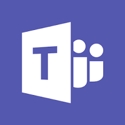
Microsoft Teams seamlessly integrates with the Microsoft 365 suite, offering a unified platform for communication and collaboration.
It combines chat, video conferencing, file sharing, and app integration, creating a centralized hub for teamwork. Microsoft Teams facilitates efficient collaboration within organizations of all sizes.
Key Features
- Integration with Microsoft 365 applications.
- Provides chat, video conferencing, and file sharing in one platform.
- Channel-based communication for organized collaboration.
- App integration for enhanced productivity.
Why Microsoft Teams? Microsoft Teams provides a comprehensive platform for teams to work together, integrating seamlessly with other Microsoft tools. It’s a centralized hub for collaborative work, making it efficient for both remote and in-office teams.
3. Google Meet
Video Conferencing and Collaboration
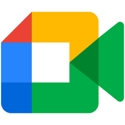
Google Meet is Google’s video conferencing solution, seamlessly integrated with Google Workspace.
It offers a secure and reliable platform for virtual meetings, enabling teams to connect and collaborate effortlessly.
Google Meet’s simplicity and integration with other Google apps make it a convenient choice for businesses.
Key Features
- Integration with Google Workspace applications.
- Provides secure and reliable video conferencing.
- Easy access through web browsers makes this tool user-friendly.
- Real-time collaboration on documents during meetings.
Why Google Meet? Google Meet is a go-to choice for businesses already using Google Workspace. It provides a secure and collaborative environment for virtual meetings and discussions.
4. Skype
Video Calling and Messaging
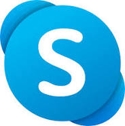
Skype has been known as a pioneer in connecting online and streaming through video calls and messages in the social world.
It provides a platform for remote individuals and teams to connect on a broader level. through video, voice, and chat.
Skype’s simplicity and widespread use make it a familiar choice for virtual meetings and staying connected with colleagues.
Key Features
- Video calling and instant messaging.
- Group video calls for team discussions.
- Screen sharing for presentations or troubleshooting.
- Integration with Microsoft applications.
Why Skype? Skype is a widely recognized platform for its simplicity and ease of use. It’s suitable for both professional and personal communication, making it a familiar choice for virtual meetings.
5. GoToMeeting
Online Meetings and Web Conferencing

GoToMeeting is a reliable platform for hosting online meetings and web conferences.
With features like screen sharing, chat, and participant management, it provides a professional environment for virtual collaboration.
GoToMeeting is suitable for both internal team meetings and external client presentations.
Key Features
- Professional online meeting environment.
- Screen sharing for presentations.
- Participant management for controlled discussions.
- Mobile accessibility for on-the-go collaboration.
Why GoToMeeting? GoToMeeting is known for its reliability and professionalism, making it a suitable choice for virtual meetings with clients and external partners.
6. Slack
Communication and Collaboration Platform

Slack is a powerful messaging and collaboration platform that is designed to facilitate communication for individuals and teams working online.
Its user-friendly interface enables real-time messaging, file sharing, and integration with various third-party apps while connecting with people. It breaks down communication silos, fostering a more transparent and efficient workflow.
Key Features
- Real-time messaging for quick communication.
- Channels for organized team discussions.
- File sharing and integration with third-party apps.
- Searchable message history for easy reference.
Why Slack? Slack is a powerful tool for team communication, reducing reliance on email. Its channels and integrations enhance collaboration and streamline communication.
7. Telegram
Communication and Collaboration Platform

Telegram is a versatile communication and collaboration platform for instant messaging and sharing media.
Telegram offers a range of features along with its emphasis on speed, security, and simplicity. That makes it a popular and convenient choice for both personal and professional communication.
Key Features
- Instant messaging with a focus on speed and security.
- Channels and groups for organized communication.
- File sharing and media sharing capabilities.
- Bot integration for additional functionalities.
Why Telegram? Telegram offers a secure and fast messaging platform with features like channels, making it suitable for both professional and personal communication.
8. Trello
Project Management and Task Tracking

Trello is a visually intuitive project management tool that helps individuals and teams with boards, lists, and cards to organize their tasks.
It provides a bird’s-eye view of projects, such as it makes it easier for teams to collaborate, prioritize, and track progress, promoting hassle-free management.
It is the reason that Trello’s simplicity and flexibility make it a go-to choice for project management.
Key Features
- Boards, lists, and cards for visual project management.
- Task assignment and due dates for accountability.
- Integration with other productivity tools.
- It has a simple and intuitive user interface.
Why Trello? Trello’s visual approach to project management makes it easy for teams to organize tasks and track progress. It’s particularly effective for agile project management.
9. Asana
Task and Project Management

Asana is a robust project management tool that empowers teams to organize and track work. Asana promotes transparency and accountability in project workflows.
Its user-friendly interface and customizable features simplify task management, enabling teams to plan projects, set deadlines, and monitor progress collaboratively.
Key Features
- Task management with due dates and priorities.
- Project timelines and milestones for planning.
- Collaboration through comments and attachments.
- Integration with various applications.
Why Asana? Asana is a powerful project management tool as it promotes transparency and accountability with a number of useful features. Its user-friendly interface simplifies task management through collaboration, timelines, and prioritizing tasks.
10. Jira
Project Management for Software Development

Jira is a project management tool specifically tailored for software development teams.
It allows for the planning, tracking, and release of software projects while collaborating with people from around the globe.
With customizable workflows and detailed reporting, Jira facilitates collaboration among development teams and ensures the smooth delivery of software products.
Key Features
- Agile project management for software development.
- Customizable workflows and detailed reporting.
- Integration with development tools and apps.
- Collaboration on code and development tasks.
Why Jira? Jira is specifically designed for software development teams, providing a comprehensive platform for project management and collaboration on coding projects.
11. ClickUp
All-in-One Project Management

ClickUp is an all-in-one project management platform for remote collaborations, offering a wide range of attributes. It includes task management, document sharing, and goal tracking.
It makes ClickUp a versatile solution for various project management needs in the office or for remote workers.
Its customizable interface allows teams to adapt the platform to their unique workflows.
Key Features
- All-in-one platform for project management.
- Customizable interface to adapt to team workflows.
- Task management, document sharing, and goal tracking.
- Integration with third-party applications.
Why ClickUp? ClickUp’s versatility makes it suitable for various project management needs. Its adaptability to different workflows ensures that teams can tailor it to their specific requirements.
12. Basecamp
Project Management and Collaboration

37signals, now known as Basecamp, is a project management and collaboration platform that simplifies team communication.
It provides to-do lists, file storage, and messaging in one cohesive collaborative platform.
Basecamp’s straightforward approach makes it a popular choice for teams looking for a no-frills collaboration tool.
Key Features
- To-do lists, file storage, and messaging in one platform.
- A centralized hub for team collaboration.
- Simple and straightforward interface.
- Document and file sharing for project-related materials.
Why Basecamp? Basecamp’s straightforward approach to project management makes it a popular choice for teams looking for a cohesive collaboration tool without unnecessary complexity.
13. Google Workspace
Integrated Productivity Suite
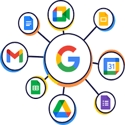
Google Workspace, formerly known as G Suite, offers a suite of productivity tools including Gmail, Google Docs, Sheets, Drive, and more.
It promotes real-time collaboration and communication among remote workers, enabling them to work together seamlessly.
Google Workspace streamlines workflows and enhances productivity for both remote and in-office teams.
Key Features
- The suite of productivity tools including Gmail, Docs, Sheets, etc.
- Real-time collaboration on documents.
- Seamless integration between applications.
- Cloud-based storage for easy access to files.
Why Google Workspace? Google Workspace streamlines workflows by providing a suite of interconnected applications, promoting real-time collaboration and productivity.
14. Airtable
Flexible Database and Collaboration Tool
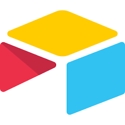
Airtable combines the simplicity of a spreadsheet with the complexity of a database. It allows teams to organize and collaborate in a flexible and visual way while working from a distance.
Airtable’s unique structure makes it suitable for a wide range of usage, from project management to content planning and organizing tasks while planning them.
Key Features
- Combination of a spreadsheet with a database.
- Visual organization and collaboration on information.
- Flexible structure adaptable to different use cases.
- Project management, content planning, and more.
Why Airtable? Airtable’s unique structure makes it versatile for various use cases. It offers flexibility in organizing and collaborating on information in a visual and interactive way.
15. ProofHub
Project Management and Team Collaboration
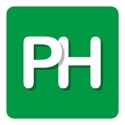
ProofHub combines project management with team collaboration features.
It includes task management, discussions, notes, and time tracking, creating a centralized hub for project-related activities.
ProofHub streamlines communication and ensures that everyone is on the same page throughout the project lifecycle.
Key Features
- Combined project management and collaboration.
- Task management, discussions, notes, and time tracking.
- A centralized hub for project-related activities.
- Enhanced communication and coordination.
Why ProofHub? ProofHub brings together project management and team collaboration features, providing a centralized space for teams to manage tasks, discussions, and project-related activities effectively.
16. Notion
All-in-One Workspace

Notion is a vigorous workspace that combines note-taking, task management, and collaboration in a single platform.
Its flexible structure allows teams to create custom workflows and databases. It makes Notion a versatile tool for organizing and managing projects in a productive manner to ensure quality work from a distance.
Key Features
- All-in-one workspace for note-taking and task management.
- Customizable workflows and databases.
- Collaboration on documents and projects.
- Integration with various third-party apps.
Why Notion? Notion’s flexibility makes it a versatile tool for organizing and managing projects. Its collaborative features and customization options cater to diverse team needs.
17. Github
Project Management and Team Collaboration

GitHub combines project management with software developers’ collaboration features. It includes task management, discussions, chats, and notes.
It creates a centralized hub for project-related activities especially for remote teams to manage work.
Through this, anyone can ask for help in the project even strangers. GitHub ensures that everyone is on the same page throughout the project lifecycle.
Key Features
- Project management with a focus on software development.
- Collaboration on code, issues, and pull requests.
- Integration with development tools and services.
- Version control for tracking changes in code.
Why GitHub? GitHub is a cornerstone for software development teams, providing a platform for collaborative coding, issue tracking, and version control.
18. Google Drive
Cloud-Based File Storage and Collaboration

Google Drive provides a collaborative environment for creating, storing, and sharing documents, spreadsheets, and presentations.
With real-time editing and commenting features, Google Drive enhances team collaboration.
It seamlessly integrates with other Google Workspace apps, creating a cohesive platform for productivity.
Key Features:
- Cloud-based storage for documents, spreadsheets, etc.
- Real-time collaboration on files.
- Integration with Google Workspace applications.
- Accessible from any device with internet connectivity.
Why Google Drive? Google Drive simplifies file management and collaboration by providing a secure cloud-based platform. It seamlessly integrates with other Google Workspace applications.
19. Dropbox
Cloud Storage and File Sharing

Dropbox revolutionizes how teams manage and share files while organizing and managing larger projects.
This cloud-based platform allows seamless synchronization of documents, images, and videos across devices with a range of other features too.
Its user-friendly interface and strong security features make collaboration on projects effortless and secure while keeping the data stored in the cloud without any mistrust.
Key Features
- Cloud-based platform for file synchronization.
- Seamless sharing of documents, images, and videos.
- Robust security features for data protection.
- User-friendly interface for easy collaboration.
Why Dropbox? Dropbox is a user-friendly platform for secure file storage and sharing. Its simplicity and widespread use make it a reliable choice for collaboration on projects.
20. TeamViewer
Remote Access and Support
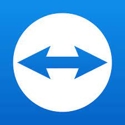
TeamViewer is a remote access and support tool, that facilitates collaboration by allowing users to access computers and share screens.
Whether for troubleshooting, training, or remote work, TeamViewer ensures seamless connectivity.
It makes this software an indispensable tool for IT support and remote teams in collaborating.
Key Features
- Remote access for controlling computers.
- Screen sharing for troubleshooting and support.
- File transfer capabilities.
- Secure connectivity for remote collaboration.
Why TeamViewer? TeamViewer is an indispensable tool for IT support and remote teams. It provides a secure and reliable platform for remote access and collaborative troubleshooting.
21. AnyDesk
Remote Desktop Access

AnyDesk is a remote desktop access tool enabling users to connect to and control other computers remotely.
It’s a high-performance reliable tool for IT support, remote work, and collaboration across geographically dispersed teams and individuals.
AnyDesk prioritizes speed and security in remote desktop connections, ensuring collaboration and management stability.
Key Features
- Remote desktop access for controlling computers.
- High-performance capabilities for efficient collaboration.
- Speed and security prioritization in remote connections.
- Seamless support for IT teams and remote work.
Why AnyDesk? AnyDesk’s focus on speed and security makes it a reliable choice for remote desktop access. It ensures stable connections for efficient collaboration and support.
22. Toggl
Time Tracking and Productivity

Toggl is a time-tracking tool that helps teams monitor how they spend their work hours.
Its simple interface and robust reporting features make it easy for individuals and teams to track time on tasks and projects.
Toggl promotes accountability and efficiency by providing insights into time usage, making it easier to complete tasks on time.
Key Features
- Time tracking tool for monitoring work hours.
- Simple interface for easy use.
- Robust reporting features for insights into time usage.
- Promotes accountability and efficiency.
Why Toggl? Toggl simplifies time tracking with its user-friendly interface. It provides valuable insights into how time is spent on tasks and projects, enhancing accountability and efficiency.
23. Evernote
Note-Taking and Organization

Evernote is a versatile note-taking app that helps individuals and teams capture ideas.
It helps in organizing thoughts and collaborating on projects.
Its intuitive interface and synchronization across devices make it a go-to tool for keeping track of information and fostering creativity.
Key Features
- Versatile note-taking app for capturing ideas.
- Synchronization across devices for accessibility.
- Organization of thoughts and collaborative project work.
- Intuitive interface for a user-friendly experience.
Why Evernote? Evernote is a go-to tool for note-taking and organization as it is suitable for individuals and teams looking to capture and collaborate on ideas.
24. Todoist
Task Management and Productivity

Todoist is a task management tool that is designed to help individuals and teams organize their tasks and their work schedules.
Its simple interface allows users to create tasks, set due dates, and prioritize work, making it easier for them to complete their jobs on time.
Todoist is a valuable tool for prioritizing your tasks, staying organized, and ensuring that important tasks are met on time.
Key Features
- Task management with due dates and priorities.
- Intuitive interface for creating and organizing tasks.
- Collaboration features for team productivity.
- Ensures important tasks are completed on time.
Why Todoist? Todoist’s simplicity and intuitive design make it a valuable tool for task management. It helps individuals and teams stay organized and prioritize work effectively.
25. Time Doctor
Productivity Management and Time Tracking
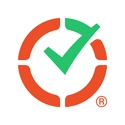
Time Doctor goes beyond simple time tracking, providing insights into how time is spent on tasks and projects.
It helps teams optimize productivity by identifying areas for improvement.
With features like website and application tracking, Time Doctor is a comprehensive tool for managing work hours effectively.
Key Features
- Beyond time tracking, provides insights into time usage.
- Website and application tracking for productivity.
- Optimizes productivity by identifying improvement areas.
- A comprehensive tool for managing work hours effectively.
Why Time Doctor? Time Doctor goes beyond simple time tracking, offering insights into how time is spent on tasks and projects. It helps teams optimize productivity by identifying areas for improvement.
26. MIRO
Online Whiteboard and Collaboration

MIRO is an online whiteboard platform that facilitates collaborative brainstorming and visual planning.
It provides a virtual space for teams to ideate, share ideas, and work together in real time.
MIRO’s easy interface and diverse set of collaboration tools make it an ideal platform for remote teams. Specifically, to enhance creativity, streamline project workflows, and visually communicate complex concepts.
Key Features
- Online whiteboard platform for collaborative brainstorming.
- Real-time collaboration on diagrams and visual planning.
- A diverse set of collaboration tools for creativity.
- Ideal for enhancing remote team collaboration.
Why MIRO? MIRO provides a virtual space for teams to ideate and collaborate visually. Its intuitive interface and diverse collaboration tools make it an ideal platform for enhancing creativity and streamlining project workflows.
27. MURAL
Digital Workspace and Collaboration

MURAL is a digital workspace and collaboration platform that enables teams to collaborate visually. It offers a canvas for creative thinking, allowing users to create diagrams, mind maps, and collaborative boards.
MURAL is particularly valuable for remote teams engaged in design thinking, agile methodologies, and any collaborative processes that benefit from a visual and interactive approach.
It enhances remote collaboration by fostering creativity and streamlining visual communication.
Key Features
- Digital workspace for collaborative visual thinking.
- Creation of diagrams, mind maps, and collaborative boards.
- Ideal for design thinking and agile methodologies.
- Enhances remote collaboration through visual communication.
Why MURAL? MURAL is a digital workspace designed for remote team engagement in design thinking, elegant procedures, and any collaborative processes that benefit from a visual and interactive approach.
28. ExpressVPN
Virtual Private Network (VPN)
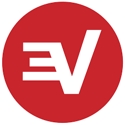
ExpressVPN is a vigorous virtual private network (VPN) service that prioritizes user privacy and security while establishing private connections.
It allows individuals and businesses to connect with the internet, protecting sensitive data from potential threats.
ExpressVPN is known for its fast and reliable servers across the globe, making it a popular choice for secure browsing, anonymous access, and safeguarding online activities.
Key Features
- Robust VPN service prioritizing user privacy and security.
- Secure and private connection to the internet.
- Fast and reliable servers globally for secure browsing.
- Ensures anonymity and safeguards online activities.
Why ExpressVPN? ExpressVPN is known for its reliability and emphasis on user privacy as it provides a secure and private connection. That makes it a popular choice for those seeking anonymity and data confidentiality.
29. NordVPN
Virtual Private Network (VPN)

NordVPN is a reputable VPN service known for its privacy provision and advanced security features.
With a vast network of servers worldwide, it enables users to browse the internet securely while accessing region-restricted content and protecting their online identity.
It is a trusted tool for maintaining online anonymity, accessing anonymously, and ensuring data confidentiality while secure browsing.
Key Features
- Reputable VPN service with a focus on privacy.
- A vast network of servers worldwide for secure browsing.
- Access to region-restricted content.
- User-friendly interface and commitment to a no-logs policy.
Why NordVPN? NordVPN is recognized for its privacy features and wide network of servers. Its user-friendly interface and commitment to a no-logs policy make it a go-to choice.
Concluding Remarks!
In conclusion, the rise of remote work has transformed the traditional landscape of work, opening up new possibilities for flexibility, collaboration, and productivity.
As the statistics indicate, a significant portion of the workforce has embraced remote or hybrid work models, highlighting the need for effective collaboration tools to facilitate seamless communication and teamwork.
The toolkit for remote teams encompasses a diverse array of digital tools, each serving a specific purpose in enhancing collaboration, project management, communication, and overall productivity.
Remote work tools not only bridge the geographical gaps among team members but also contribute to a better work-life balance and environmental sustainability by reducing the need for physical office spaces and commuting.
In the evolving landscape of remote work, adaptability is key. The variousness of available tools ensures that workers can choose the tools according to their unique needs and workflows.
Embracing this digital transformation is not just a necessity; it’s an exciting journey into the future of working remotely.
From communication and collaboration to project management and security, the comprehensive toolkit empowers remote teams to thrive in the dynamic world of work, where freedom meets efficiency.
These tools were derived based on ratings and usage across the globe. Do you know any other useful tool that you have been loving? Do share with me in the comment section below.
